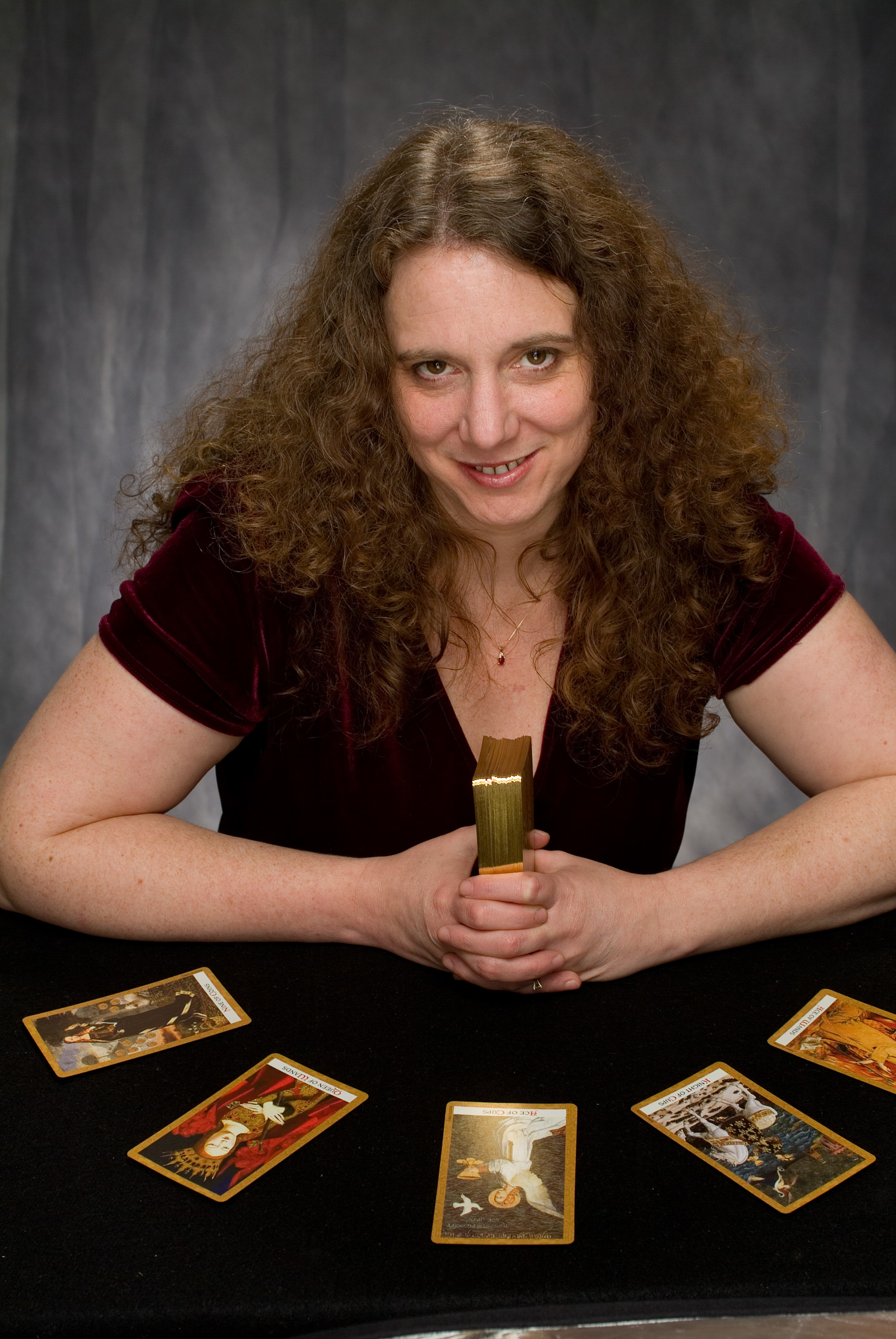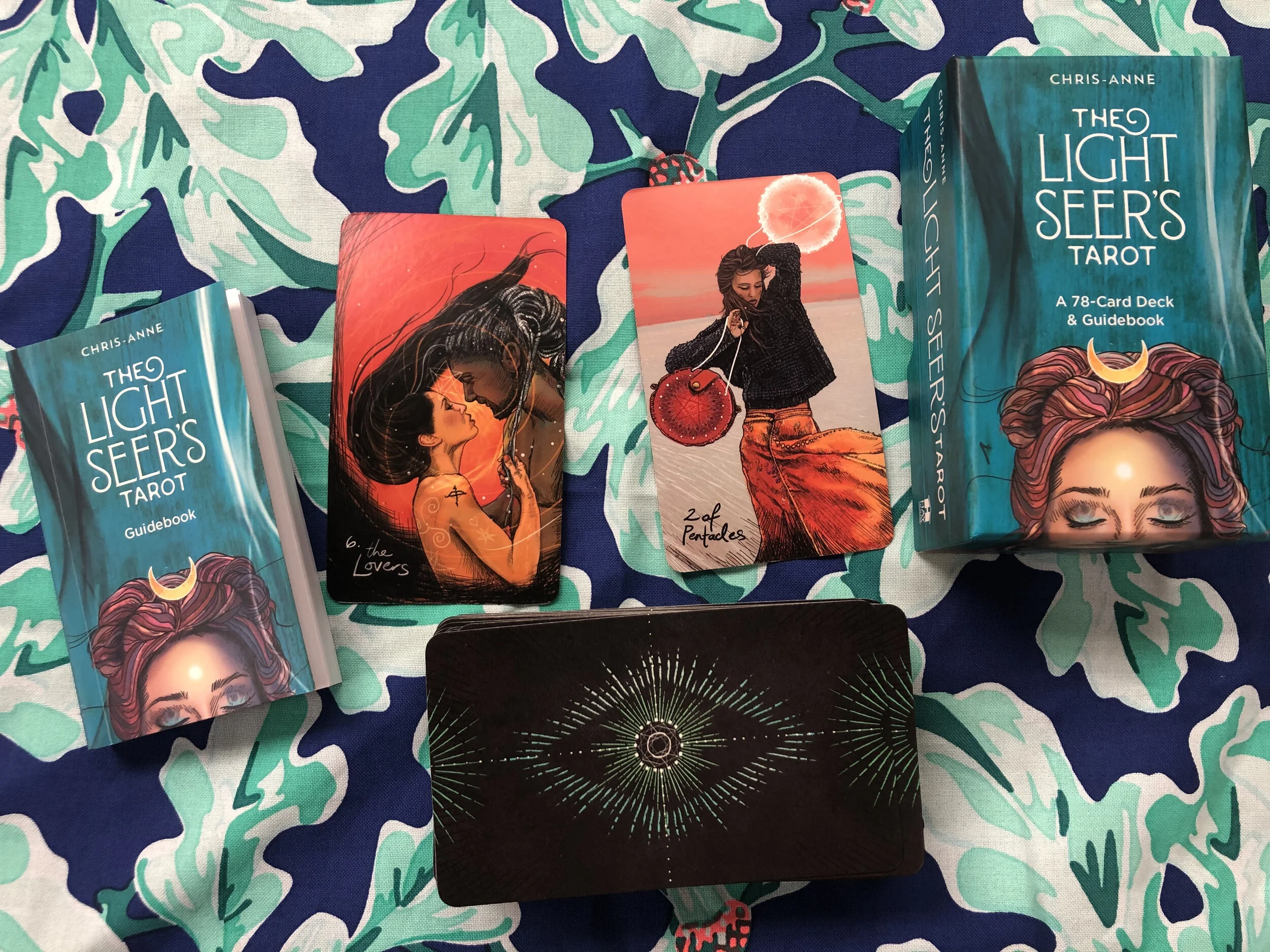
Welcome to my personal blog.
Here you will find my musings, thoughts and observations, all inspired by my experiences as a full-time professional tarot reader.
Unpacking my New Light Seer’s Tarot Deck
For the first time in a long while I have found a new deck for professional readings. Here is the process I used to figure it out.
There are a lot of tarot unboxing videos on YouTube. Watching them offers an extremely helpful way to decide if a new tarot deck is a good fit or a hard pass.
One we have chosen, or been given, a new tarot deck, we get to do our own unboxing, either on or off cam.
What happens after the unboxing?
That’s the question I want to tackle in this post, using my experience with my new Light Seer’s Tarot as an example.
This will not be a deck review. I do love Light Seer’s Tarot enthusiastically. I will give it a proper review one of these days. In this post, though, I want to document my process of adding a new deck to my exclusive group of ‘workhorse tarot decks’.
I have an extensive tarot collection. It is my goal to expand it further. I want it to be so big that it becomes both a problem and an asset for my children after I am gone from this earth.
Yet, of that extensive collection, very few decks become workhorse decks. That is, decks I will use regularly for clients, and quickly wear out from heavy use.
The idea of wearing out my beautiful new Light Seer’s Tarot, a holiday gift from afore-mentioned children, feels a little horrific to me. Yet, the lovely images and colors spark my imagination and intuition so much that I just can’t resist sharing the beauty and wisdom of these cards with clients.
I will typically, over many years, buy multiple copies of the same deck. I have worn out countless copies of Universal Waite, Hanson Roberts, Spiral Tarot, Robin Wood, Morgan Greer, and World Spirit.
One of the things that bugged me about the majority of those decks is, well, how white, skinny, young, and obviously heterosexual many of the deck characters in most of those decks are.
Long before the importance of representation was something we openly discussed I was painfully aware that the characters in my cards did not generally look like the people at my tarot table.
In the past few years, many tarot artists have been working to remedy this problem, with varying results. Even Light Seer’s Tarot caused a difficult community conversation about one particular card depiction. This taught us all that representation isn’t enough. We need to be conscious about how we represent people of cultures different from our own, and which cultural stories need to be told by which voices.
Chris-Anne, the author and artist of Light Seer’s Tarot, did a good job replacing the card in question and moving forward. Rather than stepping into outrage and pushback, she listened, learned, and allowed her beautiful deck to take its rightful place as one which will surely become a classic. Now, Light Seer’s Tarot is defined by what it has to offer us at the tarot table, rather than by any perceived misstep by its originator.
I have had this deck in my possession for about a month and a half. Over this time, it has remained constantly on my desk, where I do the majority of my client work. It is not the only deck that sits on this deck, but it is the deck I am reaching for more and more often.
Many, many decks end up on my desk. The vast majority are relegated to the collection, to be reviewed, to be used for exercises, and for comparative tarot study.
There is great value in that sort of deck use. The more decks I learn, know, and with which I perform some spreads and exercises, the more I know about tarot as a whole. It is interesting that some decks make the workhorse cut, yet the majority do not.
Virtually all tarot decks come with a guidebook. I appreciate a guidebook that tells us why the artist chose to depict a card the way they did. The thing is, I don’t refer to the guidebook at all when I am first getting acquainted with a deck. After more than a quarter-century as a full-time tarot professional, I have a good working understanding of tarot archetypes, traditions, and associations. When I first look through a new deck, I am interested and excited to see how the artist chose to express those things. It is only when I don’t understand what the artist was trying to say that I consult the guidebook about a particular card.
With the Light Seer’s Tarot, the card that sent me to the book was the Page of Cups. The flying pig didn’t make sense to me. Even after seeing the artist’s explanation, I don’t love the way the artist depicted that particular card. That is okay, though. I have never loved every single card in any deck.
After first looking through a new deck, my next step is to do a full Celtic Cross for myself and see how it all feels.
I shuffle the deck a bunch and see how that feels.
This is my version of the ‘deck interview’. I don’t do a spread to get acquainted with my new deck, as some people do. I do a spread to see what I see about myself in the cards that appear. In doing this spread for myself I can quickly see if this is a deck I might want to work with professionally.
When I shuffle, I can feel how the deck responds to my hands, and to my energy.
What I am looking for in a deck is easy readability, easy spiritual connection and an enjoyable process. I am also looking for a certain otherness which is hard to explain. I know it when it is there, and when it is not.
If shuffling and a Celtic Cross goes well, I will keep the deck in arm’s reach at my work desk. At some point, when beginning a client reading, if I feel like reaching for the deck, I will.
There are some decks that sit on my desk untouched for a while, and eventually make it to the shelved collection.
In the case of the Light Seer’s Tarot, I reached for it quite a few times in the first few weeks. Then, I let it sit for a while, untouched. This process, of either reaching or not, is entirely instinctive and intuitive. I don’t think about it, I just do it.
In the past week or so, I have been finding that my fingers are itching to work with Light Seer’s, and my eyes are craving its colors. More and more, I have been choosing it for client readings. The readings have been successful, easy, fun, flowing, deep and healing. Those are all the things I want professional readings to be.
A few nights ago, some images from Light Seer’s Tarot crept into my dreams, giving me a deeper understanding and connection to those cards, and to the deck itself.
The cards I dreamt of were the Two of Pentacles, and the Lovers. The personal message I took from that was about finding balance in my life and my work.
When a deck starts speaking to me in my dreams, it is time to acknowledge that deck as a true working deck.
I have only incorporated two new decks into my professional toolbox in the past decade. One was Crystal Visions Tarot, the other was Tarot Grand Luxe.
Ten years later, I am adding the Light Seer’s Tarot to the toolbox. My process of unpacking the deck allowed me to feel that this deck will work with me in a way that will help me serve my clients well.
I am not a tarot animist. I do not believe that my cards are alive in any real way. Yet, this process of unpacking a new tarot deck has made me ponder tarot animism a bit more than I did before. Did I choose to work with this deck after a period of getting to know it? Is it possible, rather, that I gave The Light Seer’s Tarot the opportunity to choose to work with me?
The Process in a Tarot Card
Try these simple exercises and divination techniques to enhance your work with tarot.
The Process in a Tarot Card
There are so many ways to understand a tarot card, so many different depictions of the archetypes of tarot, and so many ways to use the brilliant tool that is tarot. Today I am thinking about one particular way to use tarot – to find a process within each card.
I first started thinking about this about ten years ago when I wrote my first tarot poem about the Eight of Cups. That poem is now published in Arcana: The Tarot Poetry Anthology. (You can also read it here on my website.)
It’s still fascinating to me that we can know our cards well, use them daily, and still find in a card, at a certain moment, something we had never seen before, or thought about before. On the day I wrote that first tarot poem, what I saw in the Eight of Cups was a process of healing.
Over the ten years since I first saw a process in a tarot card, I’ve been thinking a lot about how each tarot card might convey a process. We could use this concept in a few different ways.
First, as an exercise in viewing the cards a new way we can look at each card and see the process within it. This is much more than asking what the person is doing in the image, or what the action is within the image. Rather, this is looking at each card as a metaphor for something larger. For example, we often see the Four of Pentacles as being a miser or holding on to resources inappropriately. Yet, when I look at this card with the goal of seeing a process, I might see a process of self-protection such as establishing boundaries or increasing self-care. A card without a person pictured can still discuss a process. For example, the Ace of Wands could speak to me about the process of stoking one’s internal flame.
Another way to play with this concept is in divination. If you pull a single card at random and look for the process within it, you might find a reflection of a process you are already doing in your life, or advice for a process you need to begin.
You could also try a two-card spread, with the first card indicating the process you need to begin, and the second card offering advice on how to make it happen.
When we find within each tarot card a process, we make the wisdom of tarot even more pertinent and actionable in our daily lives.




